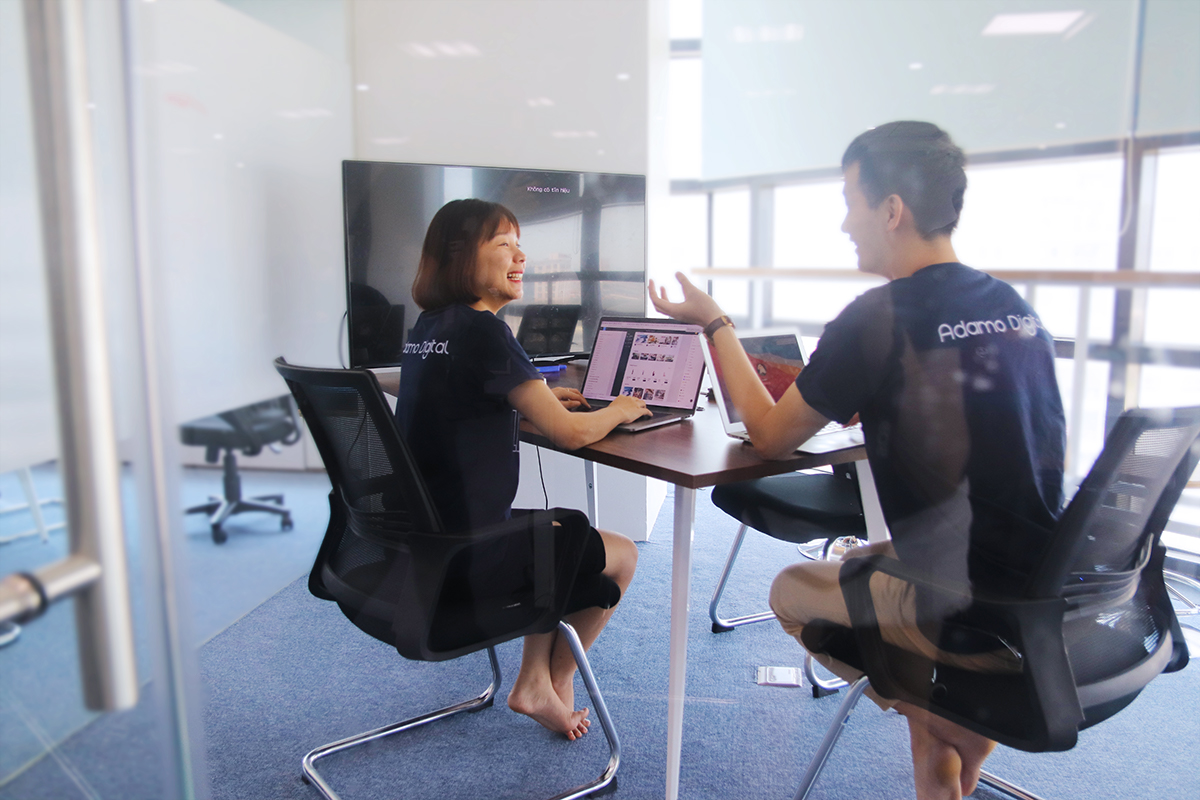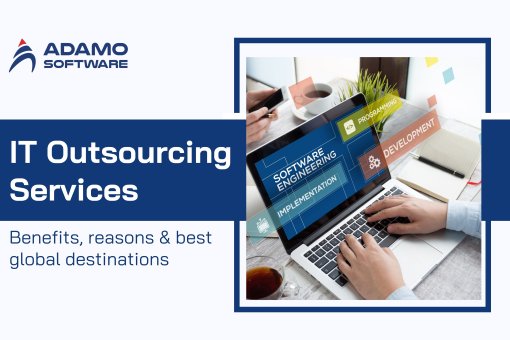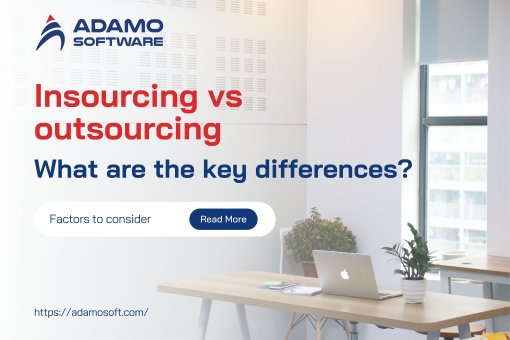Third-party food delivery services: The rising star during and post-pandemic

With its massive benefits, third-party delivery is vital to operational restaurants. Let’s check it out to see how 3rd party food delivery services work in the pandemic.
If you have a product to deliver right to potential customers, third-party delivery service is a perfect option. Third-party delivery has gained steam in popularity, especially during the covid-19 pandemic. In a savvy-tech world, online ordering software, self-service restaurants, and mobile apps are core elements in the delivery process. That helps give customers what they need regarding a fast, customized delivery experience.
With much digital delivery software on the rise, restaurants should consider the takeaway model and other off-premise ordering approaches. It supports restaurant owners achieving competitive advantages in the period when many large cities lockdowns as the effect of the covid-19 outbreak. So how third-party delivery can work during a pandemic, we show you in this article.
What is third-party delivery?
Third-party delivery is an efficient way for businesses to deliver their goods and services to end-users. Third-party delivery services like Grubhub, Uber Eats, and DoorDash work similarly. They offer a mobile app that enables customers to purchase food from your restaurant or store. The app then connects you with local delivery carriers to fulfill these orders..
Nowadays, business operators hire delivery services from third-party delivery service firms instead of using their drivers and transportations. The delivery service providers take on the workload whereas maintaining a suitable delivery process on behalf of restaurants.
When using a third-party delivery service, you have to pay a certain fee to the third-party delivery service providers. It is usually a fixed price. Utilizing the third-party delivery service somehow helps your firms reduce labor costs and insurance costs responsible for delivering goods and services.
In the current circumstances, providing quick and efficient delivery services seems to be a clever decision for restaurant operators. In the covid-10 pandemic, restaurants are under pressure to meet end-user demand for online food delivery. A report shows that 57% of millennials prefer receiving food delivered via online food ordering apps, so they can watch films and TV while enjoying food.
An outlook of third-party delivery services
_ A recent study of Raydiant states that about 40% of restaurant operators would not be able to keep their businesses in the covid-19 pandemic without third-party delivery services.
_ Nearly 77% of restaurants offered online delivery services via third-party delivery platforms before the pandemic. About 28.8% of respondents said that the third-party delivery apps account for 21%-30% of their sales volumes. Besides, 23% of contributors stated that 3rd party delivery makes up between 11% and 20% of sales.
_ Several restaurants have criticized third-party apps for delivering food owing to their high fees and non-partner restaurant business strategies. Moreover, the covid-19 outbreak has made them dependent on third-party delivery services. So trust could be weak. A report shows that a large number of respondents, 58%, said that amongst all third-party apps, DoorDash is the most trusted third-party delivery apps, Grabhub (18%) and Uber Eats (17%).
Benefits of using third-party food delivery services
If a restaurant wants to ensure smooth operation, it can build its in-house delivery services or work with a third-party delivery. Here are some benefits of using third-party food delivery platforms.
1. Expanding your reach considerably
Working with a third-party delivery can help your restaurant to expand its business considerably. Each third-party delivery platform goes with its loyal users and target audiences when using a third-party delivery service. Obviously, some customers that your restaurant might not be able to reach. This third-party delivery service can be pretty convenient for small-sized restaurants and start-ups. Furthermore, your restaurant can operate with many third-party delivery partners, for example, food ordering apps. Thus, restaurants can reach many customers.
2. Boost profit margin for your restaurant
An increase in profit margin is another benefit of using a third-party food delivery service. Third-party delivery platforms can offer great convenience and resources, along with expertise that your restaurant might not have. When cooperating with a 3rd-party delivery firm, you can scale up your business efficiently, boosting the restaurant profit margin. Thanks to third-party delivery partners’ experience and their approaches, you develop well-established business plans.
3. Enhance restaurant brand awareness
The next benefit of using a third-party delivery service is to enhance restaurant brand awareness. Third-party food delivery service allows customers to focus on core values of business regarding preparing yummy food and creating a remarkable customer experience. Outsourcing delivery service helps to widen your brand awareness in various communication channels of delivery partners. For example, customers can see your logo brand on third-party websites or even mobile apps for online ordering food.
4. Scale up your restaurant
Using a third-party delivery platform is one of the largest benefits for you to scale up the restaurant. Partnering with online food ordering platforms isn’t free; however, it allows your restaurant to avoid investments in various business-building processes. If not working with third-party delivery, your restaurant will benefit from ready-made facilities, etc. They can be a network of riders and couriers, packaging materials, delivery tracking, secure payment process, etc.
Examples of third-party food delivery

Third-party restaurant delivery service
Here are some examples of third-party delivery services that should be concerned for restaurant operations, including DoorDash, Grubhub, Postmates, and Uber Eats.
_ DoorDash: This kind of third-party delivery platform can be used for large and small business restaurants to deliver food online. DoorDash will charge a premium to widen your restaurant business visibility and take a fee of about 20-25% per order. The charges might vary depending on the state. Customers will order food via the mobile apps of DoorDash or via its hotline.
_ Grubhub: As one of the most popular third-party delivery services in the US, Grubhub offers online ordering for delivery services in most large cities. This third-party delivery asks for a 3.05% plus $0.3 processing fee and a delivery fee of 10%. Besides, Grubhub also charges a premium to present restaurant visibility.
_ Postmates: Among third-party delivery platforms, Postmates was one of the first 3rd-party delivery services in the US. This third-party delivery charges commission fees from 15% to 30% per order and sales volumes, depending on the state. Users only take orders right away via an online food ordering app of Postmates.
_ Uber Eats: initially running a ridesharing service in the market, UberEats offers consumers a third-party delivery service. If restaurants or any other business owners want to work with Uber Eats, your business has to pay a one-time fee of $350 for processing and a 20-30% commission fee per order.
Third-party delivery platforms for retail
Instacart: Third-party delivery services also introduce third-party delivery apps for retailers. In particular, the services used for grocery stores, supermarkets, or alcohol delivery, Instacart has a robust management system for providing delivery services to end-users.
Shipt: This third-party delivery service has some similarities to Instacart, owned by Target Corporation. Thanks to the presence of Shipt, business owners have a larger product scope. Using a third-party delivery platform, your restaurant can easily check inventory, daily reports, sales volumes via mobile apps.
How the third-party delivery services work in the covid-19 pandemic
The food service industry has been adversely affected during the covid-19 pandemic. Let’s see how the third-party delivery services can work during this time. When the pandemic occurred, many business operations in the foodservice industry had to do something to ensure their survival. Thus, third-party food delivery services have been a lifeline for some of them.
This is not the first time that restaurants have flocked to these online delivery platforms. However, the pandemic has experienced an explosion of new first-time users on online food delivery apps of third-party delivery services.
People are not free to go to restaurants, that’s why third-party delivery through online food ordering app is so important. Research shows that not only youngsters are now using third-party delivery apps, but busy moms are using mobile apps as well.
When a mom adopts work-from-home mode, she has seen that using third-party delivery apps during this time is remarkably convenient and appropriate, for example, Uber Eats or DoorDash. Since hours with the family has become more significant than ever. According to Witman, the demographics of third-party delivery platforms have witnessed an increasing call for convenience in all products and services.
As working hours were cut or jobs lost, the pandemic experienced a rise in new delivery drivers partnering with those platforms. People are looking for a convenient and flexible way to make money and kill their spare time. For most drivers of the DoorDash platform, delivering food via mobile apps is a suitable supplemental earning opportunity during the pandemic, with an average of 4 hours/week. Regarding third-party delivery services, DoorDash has gained 2 million drivers from March to September and got $3.5 billion in revenue in the first 6.5 months. Nearly 60% of those revenues went to food drivers.
Furthermore, many women could become food drivers, especially those who stay home for child care since schools were closed. In a survey by Uber Eats, 70% of women drivers said they became a driver since they could easily schedule their work, family, health, or education needs. Working on a personal schedule is one of the benefits that third-party delivery can provide. The third-party delivery platforms can offer immediate compensation that traditional jobs can not serve. Besides, it enables people to earn money quickly is so vital for emergency expenditures, regardless of medical problems, bills, etc.
The hidden costs of 3rd party delivery services
Lack of control over the quality of factors related to 3rd parties
The platforms manage the resolution of customer disputes and may refund large orders without your permission. In addition, business owners do not influence the quality of third-party drivers.
High commissions per transaction
Independent restaurants may pay up to 30% on each order. This expense can cut into your already slim profit margins.
No direct customer engagement
The platforms do not share the ability to email or otherwise directly contact customers. This eliminates the ability to directly contact consumers for marketing or loyalty campaigns.
Adamo Software: The best food and beverage software development company in Vietnam
Adamo Software has lots of chances to work with many restaurants and startups offering online ordering and food delivery services. Thus, we can help firms transform their business directions in the online food delivery service aspects during and after the pandemic.
Ready to boost your revenue with third-party delivery services? With the notable benefits of being partnered with third-party delivery, your restaurant will find a great way to widen its massive online reach via mobile app development solutions of some online food delivery companies. In this article, we’ll share an outlook of third-party delivery and its benefits, along with how it changes during the covid-19 pandemic.











